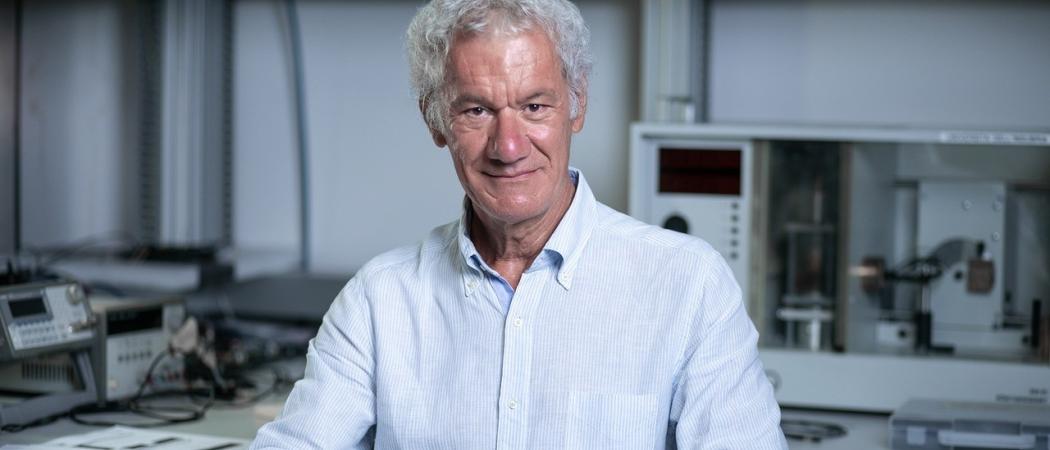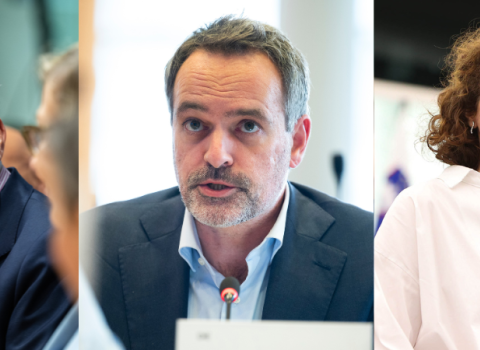Random Power, an Italian quantum innovator, is among several surprising deep-tech projects incubated by the EU-funded ATTRACT project

Physicist Massimo Caccia of Random Power.
It was in a swimming pool that Massimo Caccia, an Italian physicist, first got the idea that would lead to what is now one of Europe’s promising new quantum electronics start-ups.
At the time, he was struggling with some pesky quantum “noise” that kept disrupting the output of photon detectors he had been working with at the CERN particle accelerator near Geneva.
“While you’re swimming, you have time to think,” he recalls. “And while I was going back and forth in the swimming pool, I was thinking: is there nothing I can do with this problem? Yes, he thought: maybe the quantum noise, far from a problem, has a value of its own. That notion sparked a nine-year journey to invent, prototype, fund and get partners in a company he co-founded, Random Power srl.
A big help, he says, was a novel EU-funded R&D project, ATTRACT, that provided €2.1 million in grants and a network of collaborators to move his idea into the global tech marketplace. With the funding, Random Power has developed a suite of chips and circuit boards that can be plugged into data centres, government facilities or other institutions needing super-strong cryptography. Today, the company has patents from China to the US, has won start-up awards, and expects to pocket another €2 million or so in private funding to propel it to market.
‘Deep-tech’ incubator
Caccia’s work is one of 170 “deep tech” ideas that the €55 million ATTRACT project has helped advance since its 2018 start. The project, under the EU’s Horizon 2020 programme, brought together two universities, a business organisation, and seven research infrastructure – “big science” labs like CERN and the European Synchrotron Radiation Facility – to help move tech ideas from the lab towards the market. After granting €100,000 in seed money for each project, ATTRACT picked 18 of its most promising ventures like Random Power for a further grant of up to €2 million each. And it connected them to a huge ecosystem of physicists, engineers, companies and others across Europe.
Besides Random Power, there are ATTRACT projects developing inexpensive “terahertz” detectors to monitor crops in a field; “smart” biomarker systems to monitor people’s health more effectively; and new sensors to help drivers see better at night or in fog. Some of the results of ATTRACT will be on display July 2-3 at a conference in Brussels, assisted by Science|Business.
Bad odours
An example is Sniffirdrone, a project developing drones to monitor waste-water plants for dangerous or obnoxious gas leaks. The idea, says project leader Agustin Gutierrez Galvez of the University of Barcelona, started at a conference where he and colleagues met engineers from DAM, a big water-purification company in Spain. Their problem: getting sued by plant neighbours for bad odours. Around the world, there are regulations to control wastewater plants – but the evaluation methods for emissions and smells are slow and expensive. Could there be a faster, cheaper way of monitoring the plants?
The university’s solution: Mount a collection of sensors on a drone, and fly it systematically over a plant so it can identify and map emissions. Of course, sensors for chemical emissions aren’t new. But measuring bad odours is difficult; they’re in the nose of the smeller – dependent on the specific mix and concentration of pollutants in any one place.
So Gutierrez and his team developed an electronic nose: a drone that can fly at one metre per second over a waste water plant and, in 15 or 20 minutes of tracing out a 3D grid over the plant, map exactly what it’s smelling and where. Its sensors include a novel chemical detector for methane ammonia developed by a Scottish partner, and a system for measuring more general odours. They have patented the odour-sniffing method, and with five colleagues is now working to attract industrial partners. His aim: to offer wastewater plants a sniffing service, rather than sell the drones and sensors themselves. The market is big: there are more than 58,000 wastewater plants around the world.
In applying for ATTRACT funding, Gutierrez says, the aim is “to bring these systems to technological maturity – something new.”
Stronger encryption
Caccia’s project aims at a different kind of problem: the growing risk that quantum-based technologies could break existing encryption systems, compromising online security around the world.
From his base as a professor at the University of Insubria in Como, he worked with colleagues at AGH University in Krakow to develop his idea: harnessing, rather than suppressing, the pesky quantum signals that were disrupting his silicon-based photon detectors. The result is a series of products - from a single chip to a complete plug-in circuit board – that deliberately creates random noise, which translates into random numbers.
By random, Caccia means it absolutely: subatomic particles flipping from one quantum state to another without any predictable pattern whatsoever. There are, of course, countless random number generators already used across the globe, to simulate financial markets or weather, manage online security or preserve privacy. But most aren’t “true” random generators; there have been occasions already where hackers cracked computer systems by exploiting the slight patterns in the number generators that can sometimes be observed.
By contrast, he says, the Random Power system is more secure – as confirmed by rigorous US government testing standards. And especially important: it uses existing semiconductor technology – which makes it cheaper to manufacture and easy to plug into existing chip-based computer systems. His team has patented its system in Europe, the US, China, Japan and, soon, Korea. After an initial €200,000 venture capital investment and the €2.1 million ATTRACT grants, Random Power is now working on a funding round of €2 million to €2.5 million to scale up for market.
The ATTRACT grant, Caccia says, was helpful. The application process was “crystal clear” and quick; and managing the grant was far easier than with other EU grants. His one suggestion, for EU R&D programmes generally, is to provide more business mentorship. To make up for his own lack of commercial and financial experience, he recruited other team members with such skills; still, more coaching would have helped. And a further suggestion to Brussels: make it routine to fund “startups-in-residence” at Europe’s big scientific institutions, so a community of tech entrepreneurs is on campus to network with one another and the host institution. “It’s the spirit of the ‘artist in residence’: you have random encounters” with others who can help advance each others’ project.
He applied for ATTRACT funding, he says, because “we wanted to cross the Valley of Death,” that intermediate phase of start-up development that falls somewhere between lab and market – and is the place many tech start-ups die. The ecosystem of big scientific institutions like CERN can help. “The main role, for me, of the big institutions is to be the hub of ideas.”





 A unique international forum for public research organisations and companies to connect their external engagement with strategic interests around their R&D system.
A unique international forum for public research organisations and companies to connect their external engagement with strategic interests around their R&D system.